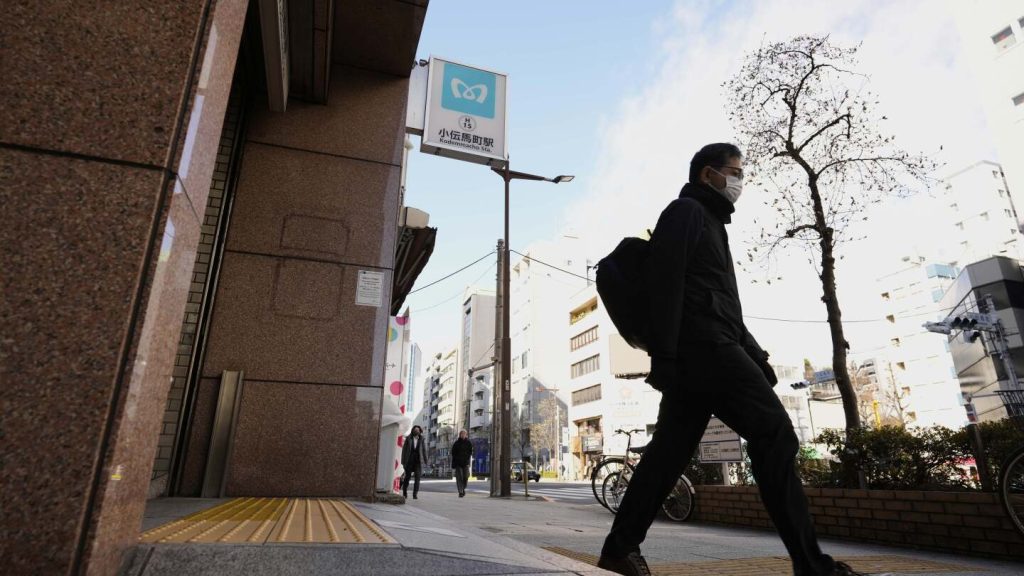TOKYO (AP) — Three decades after the tragic sarin nerve gas attack on Tokyo’s subway system, survivors and the families of victims continue to seek justice.
The attack on March 20, 1995, claimed the lives of thirteen individuals and left thousands suffering from its effects when members of a cult released sarin gas in multiple subway cars. This incident remains one of the most horrifying events in Japan, a nation recognized for its low crime rates.
The cult responsible, Aum Shinrikyo or Supreme Truth, has since been disbanded. Its leader, Shoko Asahara, along with 12 associates, was executed in 2018.
However, approximately 1,600 former members continue to operate under different names and have disregarded a court ruling to compensate the survivors and families of those who perished.
Shizue Takahashi, who lost her husband—a deputy station master—in the attack, recalls that they were just beginning to enjoy life after raising three children when the tragedy occurred. “Aum and its successor groups have ruined my life,” the 78-year-old stated. “We must persist and ensure that the memories do not fade.”
Chaos during the Attack
On that fateful morning at 8 a.m., during peak commuter hours, five cult members entered separate train cars on three subway lines converging at Kasumigaseki, Japan’s political hub, and released sarin gas by dropping bags on the floors and puncturing them with umbrellas.
Within moments, commuters were seen fleeing the trains while rubbing their eyes and gasping for air. Some collapsed onto the platforms, while others rushed to the streets where emergency responders in hazmat gear administered first aid.
Kazumasa Takahashi, while cleaning a puddle on the subway floor, unknowingly encountered sarin gas, and collapsed after removing a bag—a sacrifice that some survivors believe may have saved others, but he never regained consciousness.
The attack caused illnesses in over 6,000 people, with a 14th victim succumbing to severe complications in 2020. This attack followed a failed police investigation that had not linked the cult to earlier incidents, as noted by Yuji Nakamura, a lawyer for the survivors. “It could have been prevented,” he asserted.
The Cult’s Origins
Birthed as Chizuo Matsumoto in 1955, Asahara established Aum Shinrikyo in 1984. This apocalyptic sect intertwined elements of Hinduism, Buddhism, Christianity, and yoga, appealing to youth disenchanted with materialism. He preached that death could elevate one’s spirit and rationalized violence as virtuous.
His followers engaged in bizarre rituals, such as drinking his bathwater and wearing special headgear designed to synchronize their brainwaves with his. Asahara foretold an apocalypse from which only true followers would emerge unscathed.
Asahara attracted professionals, including doctors and lawyers, who became his closest aides, using donations and profits from meditation classes and health food sales to acquire land and resources. His scientists created sarin, VX, and various chemical and biological weapons.
Their violent history began in 1989 with the murder of lawyer Tsutsumi Sakamoto and his family, followed by a 1994 sarin attack in Matsumoto that resulted in eight deaths and over 140 injuries. In total, Aum was responsible for killing 27 individuals in a series of violent acts leading up to the subway incident, which was part of Asahara’s larger scheme to precipitate Armageddon through governmental overthrow.
Pursuing Justice
Shizue Takahashi has been an active participant in Aum’s criminal trials and has successfully campaigned for governmental support, which led to legislation to assist crime victims and 3 billion yen ($20 million) allocated for the over 6,000 survivors and families affected by Aum’s actions.
The government has also instituted measures prohibiting the manufacturing and possession of sarin and has restricted activities of groups associated with mass murder. Additionally, police forces have enhanced training and established units focused on nuclear, biological, and chemical threats.
Despite these efforts, Aum’s successor, Aleph, has failed to comply with a court ruling demanding payment of 1 billion yen ($6.7 million) in compensation to affected survivors and families, allegedly concealing billions from its yoga and spiritual programs.
Many survivors continue to experience health challenges and psychological trauma, according to support organizations. Takahashi and others have recently urged Justice Minister Keisuke Suzuki to expedite compensation processes from Aleph and to maintain close surveillance on the group.
The Continued Threat
At its height, Aum counted over 10,000 followers in Japan and 30,000 worldwide. Although the cult has disbanded, around 1,600 individuals remain aligned with Aleph and smaller factions in Japan, still following Asahara’s teachings, as reported by the Public Security Intelligence Agency.
Minoru Kariya, who lost his father to Aum members in early 1995 while trying to help his sister leave the cult, insisted that authorities need to take stronger measures against the ongoing threat posed by these groups. “It’s concerning that they still exist and continue to function as organizations while attracting new followers,” he expressed.



